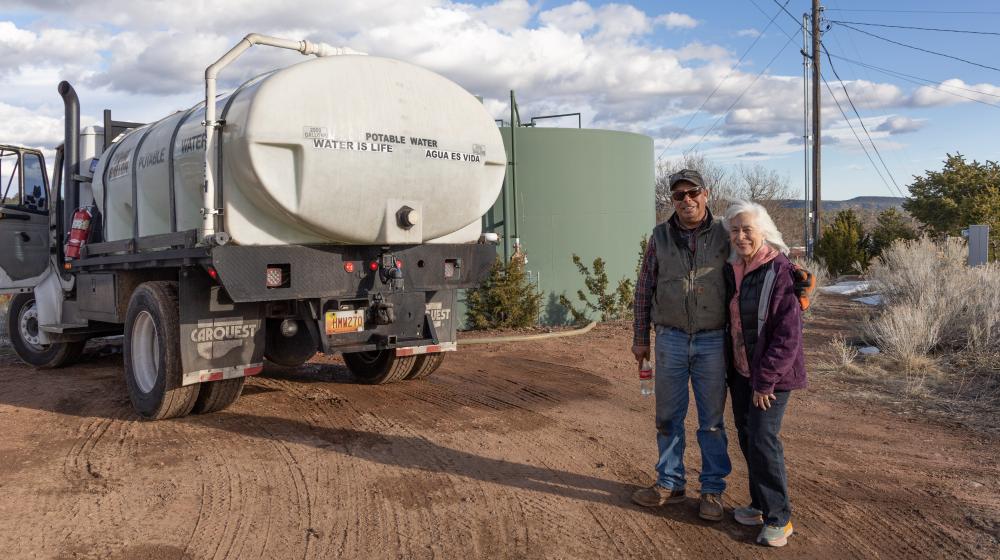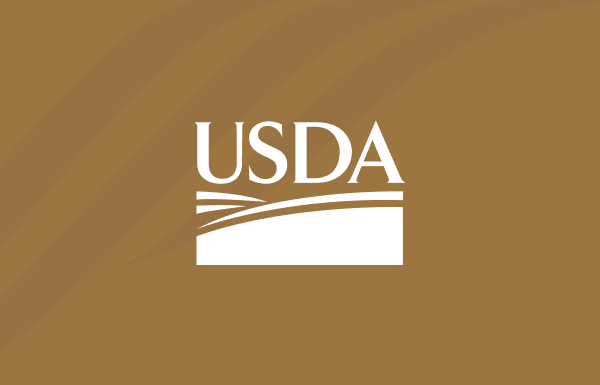
When we turn on the water faucet in our homes, most of us take for granted that water will pour out. It seems almost unimaginable to think that there might be a time when water would not flow. But three years ago, this situation became a reality for residents of a small community just south of Santa Fe, New Mexico.
Members of the Cañada de Los Alamos Mutual Domestic Water Consumers Association (MDWCA) have been dealing with low water supply issues since the 1990s. At times, they had to go without water for part of the day. Finally in July 2020, the community water well went dry and community members had to resort to paying high fees for water to be hauled in by truck, 2,000 gallons at a time up a winding dirt road.
“For the first year, we subsidized very high bills to our residents in order to purchase and haul water,” said Chita Gillis, volunteer secretary and treasurer for the Cañada de Los Alamos MDWCA. “That ended up really depleting our treasury and caused a lot of people to be unable to pay their water bills.”
According to the Environmental Protection Agency, the average per gallon cost of water in the United States is $.006 per gallon. Hauling in water to Cañada de Los Alamos costs the water association 15 to 20 cents a gallon due to fuel price and transportation time.
After the first year without a well, Gillis learned about a state board of finance emergency water fund. She applied for a grant to help subsidize the community’s water bills so residents would be paying what they would pay with a working well. She later found out about the USDA Rural Development Emergency and Imminent Community Water Assistance Grant that could help more long term. The water association board members applied for the grant and were awarded $566,000 for a new well.
Water is still being hauled in monthly while the community waits for the new well to be drilled, and Gillis continues keeping track of water usage for the community to keep water flowing.
“For about five months I went up there almost every day to measure how much was used so that I could get an average,” Gillis said. “I have been doing this for almost three years, so now I go up there once a week to check what level of water is left in the tank. I notify our bulk potable water supplier when we need a fill-up.”
The new alluvial well is set to be in place by June 2024 and will be 85 feet deep compared to the original 20 foot well dug in the 1950s. It will mean that Gillis will spend less of her retired time checking water levels in the tank, though she still has plenty of work to do on a longer-term solution. She is working with Santa Fe County to help get the community on the county water system in the next five to 10 years to alleviate any future issues due to droughts.
“We felt so fortunate that someone at the USDA told us that we might qualify for the emergency grant,” said Gillis. “Being only 25 households and having the immense loan that would have come about if it were a loan grant program would have been prohibitive.”
Gillis spends about an hour a day working to ensure there is water in the community and 15 to 20 hours monthly on grant applications, reporting requirements, and project meetings. She monitors water levels, attends meetings, communicates with contacts in the state, county, and at USDA and takes care of different tasks that pop up daily to keep all the projects moving forward.
“I did not expect to have so much of my time involved in the water association, but I was the one who stood up and said I would do it, because without a reliable water source our community cannot survive,” Gillis said. “It is my home and my community that desperately needs a water source, so it is worth the work. Although it is a lot of work and considerable stress, I have learned a great deal. I have also benefited from the support of people at every level of government and from the private sector as well. I have learned that if there is someone in your community willing to spearhead your project, you will find the support and resources you need."
To learn more about USDA Rural Development grant and loan programs that may help you or your community, visit the programs page.

